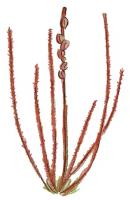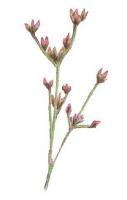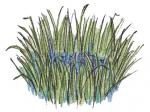A wetland is an area that is waterlogged, or partially or completely covered by water for all or part of the year. The Canadian Wetland Classification System organizes wetlands into five types:
_RESIZED.jpg) |
_RESIZED.jpg) |
Bog: Acidic, low nutrient, peat rich areas that may contain trees. The only water source is from precipitation and snowmelt. The main plants are peat mosses and shrubs.
Fen: Peat rich areas that receive nutrients from the water that flows through them (surface runoff, groundwater). Typically flooded in the winter and dominated by mosses, sedges, rushes, and shrubs. Streams and/or pools may be present.
Swamp: Treed wetlands with stagnant or slow-flowing pools.
Marsh: Periodically or permanently flooded wetlands with changing water levels. The main plants are rushes, reeds, grasses, sedges and shrubs.
Shallow Water: Transitional areas between bogs, fens, swamps, marshes and permanent water bodies such as lakes. Include basins, pools, ponds, and channels.
THREAD-LEAVED SUNDEW
.jpg) |
 |
Found in the peaty hollows of raised bogs that have cone-shaped mounds of earth interspersed with low peaty hollows. Raised bogs are infertile, acidic open wetlands dominated by peat mosses, heath shrubs, short sedges and grasses. |
NEW JERSEY RUSH
.jpg) |
 |
Found along the edges of small bays or coves of bogs and fens and in small boggy openings in coniferous woods. Requires open conditions and moderate disturbance. Found in wet areas but does not grow well in prolonged standing water. Sensitive to changing water levels and negatively affected by events such as site drainage or flooding. |
LONG'S BULRUSH
.jpg) |
 |
Stillwater meadows, inland fens, and wetlands attached to lakes. Located on peat substrates where competition from shrubs is minimal due to waterlogged conditions, ice scour, and/or low available nutrients. Tend to grow in the most waterlogged areas of these habitats. |

